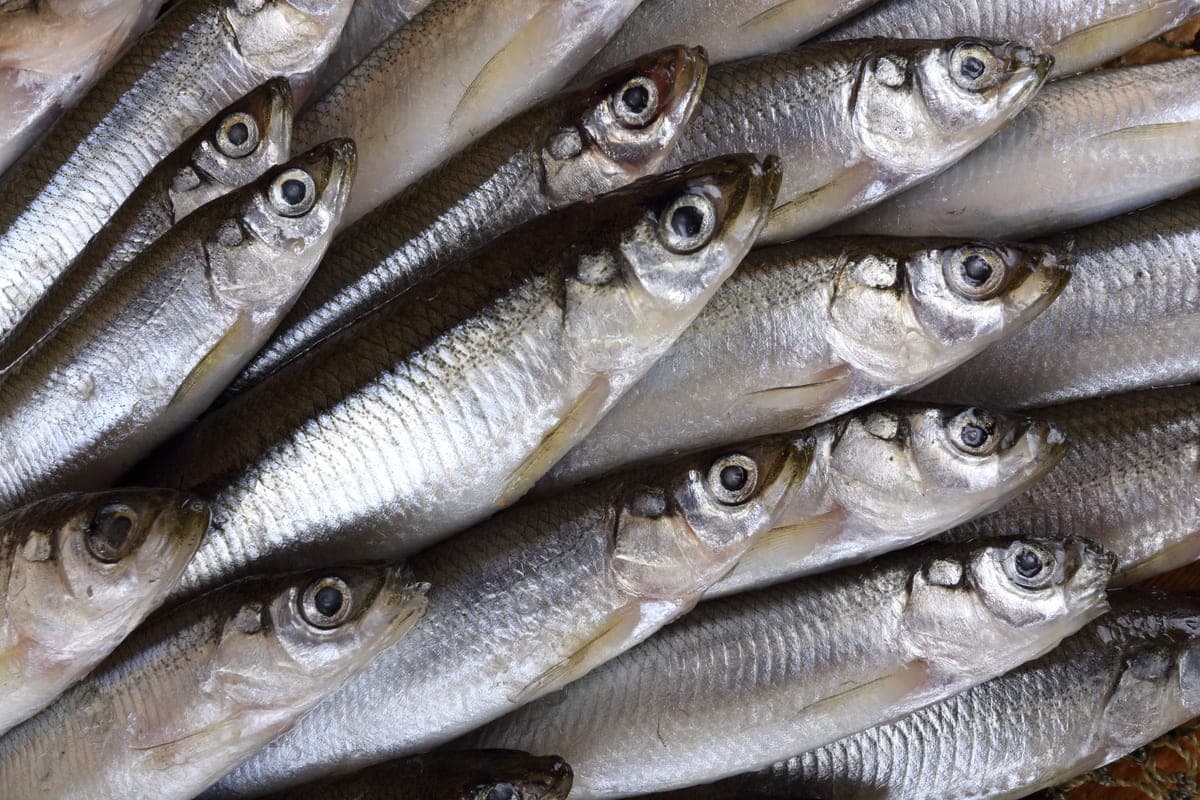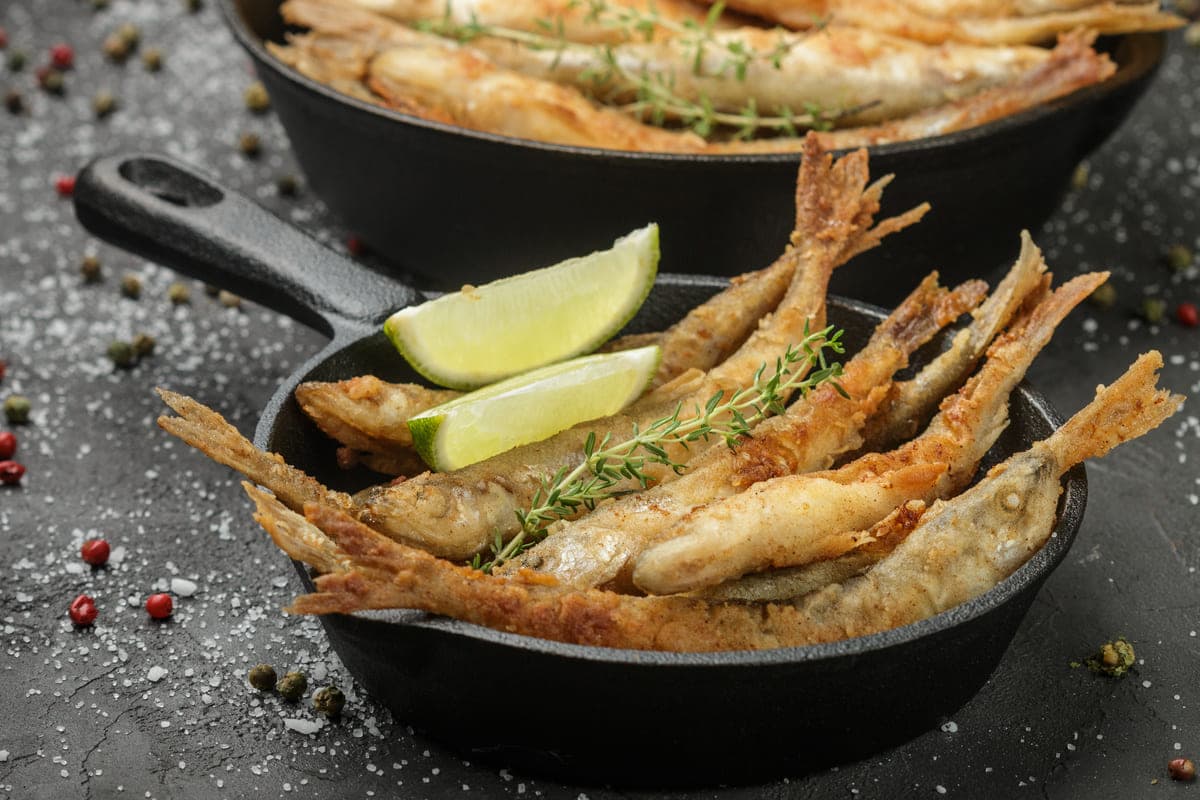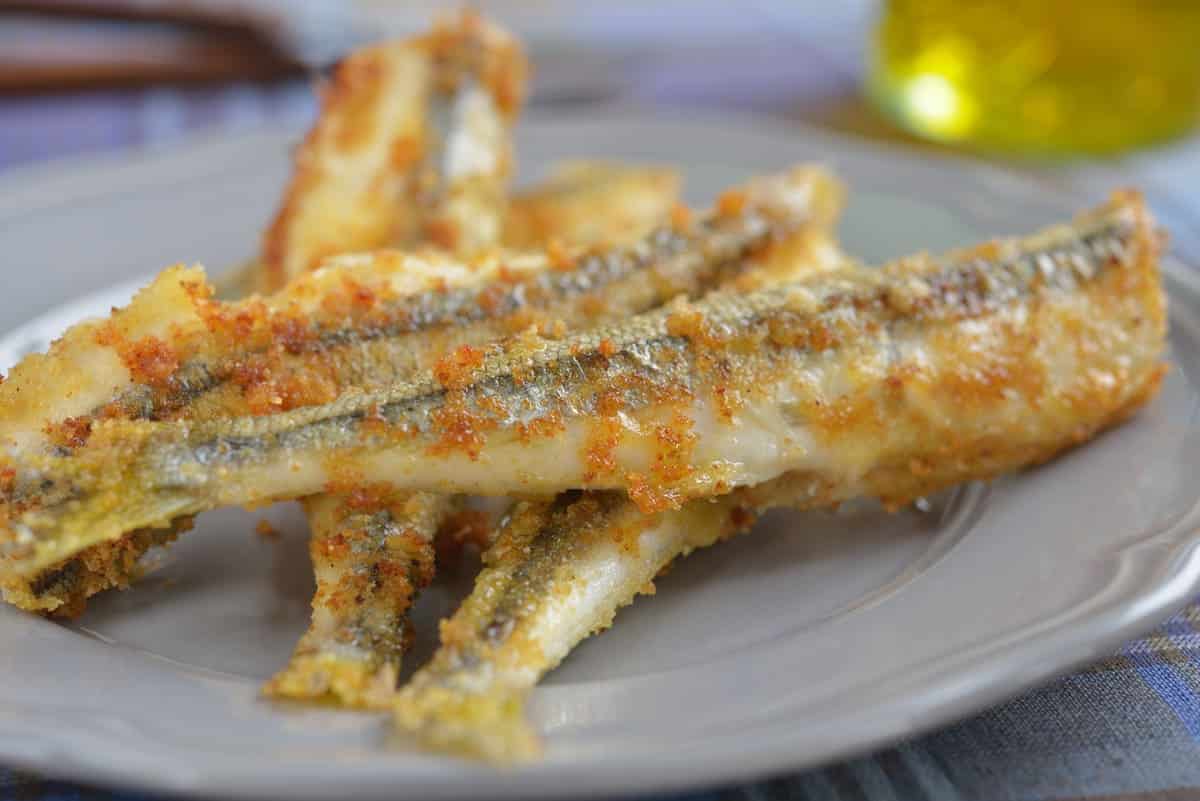
Introduction
Smelts, a small species of fish found in fresh and salt water, have captivated the attention of fishermen for centuries. Known for their delicate flavour and light texture, these tiny fish are often eaten whole or used as bait to catch larger species.
Description & Characteristics
Smelts are small fish from the family Osmeridae, found in both freshwater and saltwater environments. They are often found in colder water habitats, such as streams, lakes, estuaries, and oceans.
The most common species of smelts belong to the genera Mallotus and Osmerus. These fish vary in size, usually from two to eight inches long, and colouration depending on the species, but they generally have a slim body shape and a forked tail. Smelts typically have a silvery sheen to their scales, with darker-coloured markings along the sides of their bodies.
Smelts are an integral component of many freshwater ecosystems due to their role as prey for larger fish species such as salmon and trout. As such, they serve as an essential food source for these predators and contribute to maintaining healthy populations of these fish species.
In addition, smelts provide humans with a valuable source of nutrition that can be easily caught with standard fishing gear.

Habitat And Distribution
Smelts are known for their wide distribution and diverse habitats. Like a nomad, they move from one place to another quickly, settling in oceans, rivers, and lakes everywhere.
These fish thrive in both fresh and saltwater environments. They are commonly found in estuaries of major river systems and coastal areas along the Atlantic coast of North America.
Smelts also inhabit rivers that flow into larger bodies of water, such as the Great Lakes and St. Lawrence River. In addition, smelts have been found in brackish bays from Nova Scotia to Virginia and in coastal streams from Oregon to Alaska.
In Europe, smelts can be found along the North Sea coastline, including Norway, Sweden, Scotland and Ireland. The fish has also been spotted living in inland waters such as German rivers Rhine and Elbe and on the Iberian Peninsula near Spain’s Mediterranean coast. Lastly, smelts are native to Japan and inhabit large rivers like the Tone River running through Tokyo Bay.
Thanks to its wide range of habitats, smelt populations remain abundant throughout much of its range despite occasional declines due to overfishing or environmental degradation.
Consequently, they are an essential food source for many people in their natural habitats, who harvest them with nets or lines with hooks for human consumption or to use as bait for other fisheries.
Fisheries
Symbolically, smelts are often viewed as an indicator of the health of an aquatic ecosystem. These small fish have been harvested for centuries by coastal communities, and even today, their fisheries remain essential to many communities worldwide.
Fisheries for smelts can be divided into two main categories: commercial and recreational. Commercial fisheries typically target large numbers of smelts for sale on the market or for use in products such as fish meal and oil. Recreational fisheries involve anglers catching smelts for sport or to eat. Both types of fishing may cause a decline in local smelt populations if not well-managed.
Sustainability
Smelts have long been harvested for food. However, with increasing demand and overfishing, the sustainability of smelt populations is of utmost importance. Like a delicate balance between predator and prey, maintaining the equilibrium of smelt stocks requires careful consideration.
One way to ensure smelts’ sustainability is through increased fishing activity regulations. This includes restrictions on harvesting periods and limits on smelt catch sizes. These measures should be implemented with other conservation efforts, such as habitat protection and restoration.
Additionally, improving water quality can help promote the growth of smelt populations by providing ideal spawning grounds for them to reproduce successfully.
In addition to regulation changes, it is vital to consider the effects of climate change on smelts. Warmer temperatures can reduce oxygen levels in waterways, negatively affecting juvenile smelts’ survival and reproductive success rates. To combat this, better monitoring systems can be implemented to identify areas where pollution or other environmental issues are hindering the health of a specific population that could benefit from intervention efforts.
By implementing these measures, we can protect our valuable resources and ensure that future generations can enjoy them.
Life Cycle
The life cycle of smelts is a fascinating process involving essential development stages. This species, which belongs to the Osmeridae family, has a complex life cycle, which starts with spawning in freshwater and ends with their return to the ocean.
Smelts spawn mainly during the winter when water temperatures are low, usually between 0-6°C. After hatching in the spring, larvae swim downstream and eventually reach estuaries and coastal areas, where they remain for a few months before continuing towards open sea waters. During this phase, smelts undergo several physical and morphological changes that allow them to live in saltier environments.
Once they reach the ocean, smelts feed on planktonic organisms such as copepods or amphipods until they reach maturity. Adult smelts generally take about two years to be fully grown and ready to spawn again back in freshwater rivers and streams.

The journey from the ocean is arduous for these fish since most have adapted to living in salty waters, making it difficult for them to migrate upstream while dealing with intense pressure differences along the way.
Once they reach their spawning grounds, adults lay eggs on gravel beds at depths of up to four meters before dying shortly after spawning. The eggs then hatch into larvae and begin their journey back towards the sea, completing the lifecycle of a smelt.
Etymology
The term smelt is believed to be derived from the Middle English word smelte, which was used to describe any small silvery fish caught in a river or stream. Additionally, it is thought to have been adapted from the Dutch word smelt, which means ‘to dissolve’.
Smelts’ Diet
Smelts are small, silvery fish that enjoy a diverse diet. They primarily feed on zooplankton, insect larvae, and other small invertebrates in their habitats. Smelt also consumes crustaceans such as amphipods, shrimp, and copepods. These fish may hunt for food near the shoreline or in deeper water, depending on the season and availability of prey.
During the spawning season, smelts will move to shallow waters to take advantage of abundant food sources near the shoreline.
Smelts have even been documented to feed on smaller fish, such as juvenile sticklebacks and minnows. In addition to these organisms, smelts may consume worms, molluscs, and certain algae. These fish are opportunistic feeders that can adjust their diet based on what is available in their local environment.
Smelt often use their eyesight and sense of smell to locate food sources which they can snatch up with their jaws or gills.
Smelts As Food
Smelts have become popular in many parts of the world due to their unique flavour and nutritional value. They are often considered a delicacy because of their delicate flavour profile. The flesh is mild with a subtle sweetness, making it an excellent choice for fish tacos or fried smelts dishes.
Smelts are also high in beneficial nutrients like omega-3 fatty acids, protein, vitamin B12, phosphorus, magnesium, and potassium—all of which contribute to good health. Additionally, they contain fewer calories than other types of seafood, such as salmon or shrimp.
Smelts can be cooked in various ways, including baking, grilling, frying and steaming. When preparing them for cooking, removing the head and gut is best before filleting the fish into small strips or cubes.
To enhance the flavour of smelt dishes, add herbs or spices like garlic powder or paprika for an extra kick of flavour. It is essential to ensure that all ingredients used when cooking smelt are fresh; otherwise, it may affect the dish’s overall taste.
How To Prepare
Smelts are small, edible fish that can be prepared in several ways. Preparing smelts is like taking a journey; you can take many different paths to reach the same delicious destination.
Frying
This is the most popular way to prepare smelts, yielding a crispy exterior and juicy interior. Sprinkle smelts with seasoned flour. Then fry the seasoned smelts until golden brown on both sides in butter or oil over medium heat.
Baking
This method produces slightly healthier results since no added fats are used. Roll smelts in breadcrumbs, then bake until they turn golden brown – usually around 15 minutes at 350°F (177°C).
Grilling
Smelts can be cooked on an outdoor grill just like any other fish. Preheat your grill to medium-high heat, then brush oil onto both sides of the fish before placing them directly onto the grate. Cook until they reach an internal temperature of 145°F (63°C).
Boiling
For those who want to avoid messing with high temperatures, boiling is another simple way to prepare smelts. Place them in boiling water for about five minutes or until they turn opaque throughout – then strain out any excess liquid before serving with your favourite sauce or side dish.
With these four preparation methods, you can cook some delicious smelt dishes in no time! Whether fried, baked, grilled or boiled – you can rest assured that each technique will bring out the unique flavour of this classic seafood delicacy.
Best Side Dishes Paired With
Smelts offer an exciting and flavorful alternative to other seafood choices for those interested in adding variety to their fish dinners. An important question arises when preparing a meal with smelts: what are the best side dishes to pair with them?
There is no shortage of options for side dishes that go well with smelts. The most popular recipes call for ingredients such as potatoes, lemon juice, herbs, garlic, and olive oil. These components combine to form a robust flavour profile that pairs perfectly with the delicate taste of the smelt.
Other significant side dish ideas include grilled vegetables or roasted root vegetables like carrots, parsnips and beets. Additionally, serving a simple salad on the side is a great way to add some freshness to the meal.
Whatever side dish you choose to prepare alongside your smelt entrée, it’s important to remember that simple flavours work best when paired with this delicate fish. You can take your meal from ordinary to extraordinary with just a few ingredients and creativity!

Popular Recipes
Smelts can also be used in other dishes, such as fish chowders and stews. Smelts have a mild flavour complemented by herbs such as dill or parsley when cooked. Smelts should be cooked sparingly to get the most out of their taste; they should be cooked until just done. When frying or baking smelts, it is advisable to use high-quality oil or butter to prevent them from sticking to the pan.
Comparison To Other Fish
Smelts are a type of small fish that are popular in many countries. These fish are a vital part of the diet of many people, and they can be found in most seafood restaurants. Smelts are an excellent source of omega-3 fatty acids compared to other fish, with an average serving providing 1,500 mg per 100 grams.
Additionally, smelts contain high vitamin B12, essential for forming red blood cells and DNA synthesis. The protein content in smelts is also noteworthy, with a single serving providing about 20% of the daily value for protein.
Smelts have a delicate flavour and can be prepared in various ways. Depending on personal preference, they can be fried, baked, broiled or boiled. Smelts have a mild taste, making them suitable for almost any preparation and seasoning.
Smelts are a versatile and tasty addition to any meal and can provide essential nutrients when eaten regularly. Their mild flavour makes them suitable for almost any preparation method or seasoning combination, so they can easily become a staple in one’s diet.
History
Smelts are a type of fish that has been consumed since antiquity. According to archaeological evidence, the earliest known records of fishing for smelts date back to the 4th century BCE in Ancient Greece. Throughout its long history, smelts have been an important food source in many countries, including Canada and the United States.
Smelts have also been an important food source throughout history and continue to be enjoyed today by seafood lovers across the globe. With so many different species readily available, they offer a unique flavour profile that makes them highly sought after by those seeking something new dining out or preparing meals at home.
Conclusion
In conclusion, smelts provide an invaluable resource of essential nutrients that can easily be incorporated into almost any diet. Though they may not always be easy to find or available everywhere, they remain one of the most economical forms of seafood, providing much-needed nourishment at an “affordable price”. Therefore, it is clear that smelts should not be overlooked as an excellent source of nutrition – like a shining gem among other types of fish!